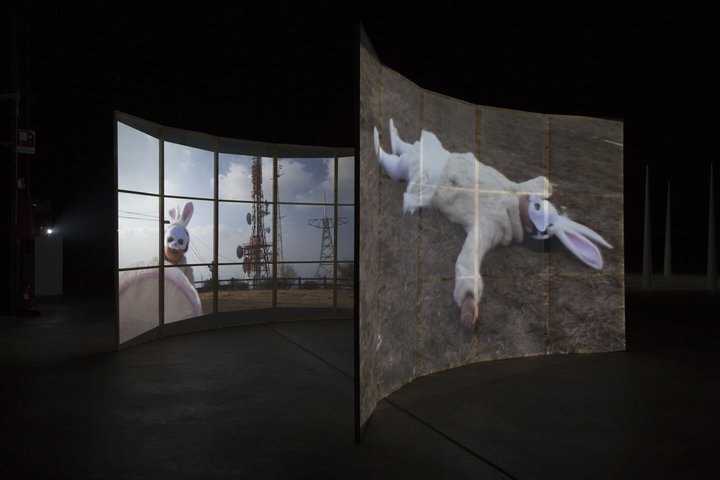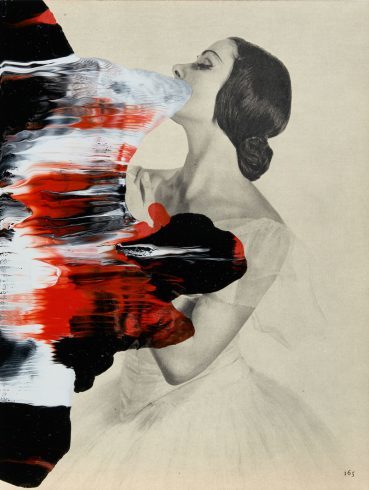Contemporary Art Trends 2018
We have witnessed a seismic shift in the cultural and political landscape in the past two years.
Brexit has brought uncertainty and division, whilst simultaneously sapping the country of its appetite for political debate. Across the pond, Donald Trump’s presidency continues to shock the world.
These phenomena have been met with much opposition; not least within the creative industries. Through the turmoil that these events seemed to have caused, new voices and new artistic talent emerge.
In light of the political unrest that pervades contemporary cultures, the question remains: what positive impact can the artists of today make?
Identity politics
Issues relating to identity and gender politics have become an issue that has infiltrated the mainstream. Identity politics is no longer limited to the confines of minority cultures. Unfortunately, it has taken scandalous revelations for such issues to surface. Social media and the #MeToo campaign, in particular, has played its part in allowing the voices of individuals to be heard.
Centenary of women’s suffrage in the UK
Coinciding with these socio-political developments is the centenary of women’s suffrage in the UK. This significant milestone provides an invaluable opportunity to reflect on contemporary societal attitudes.
Many artists and institutes across Britain have recognised the importance of the issue and have promised exhibitions on these themes.

Joan Jonas, Double Lunar Rabbits, 2012. Image courtesy artist and gallery.
The National Trust’s Women and Power programme have celebrated the anniversary of its buildings and parks across the UK. For the programme’s main show, ‘A Woman’s Place’ (17 May – 4 November), six artists, including the 2017 Turner Prize winner Lubaina Himid, will exhibit at the grand country house of Knole in Kent.
Art on the Underground, which commissions works for London’s Tube transport system, has invited an all-female cast of artists to create works in the city this year. New Tube-map covers by the artists Geta Bratescu and Marie Jacotey are due to be revealed soon, and, in June, Heather Phillipson will fill an 80m-long disused platform at Gloucester Road station with a site-specific installation of sculpture and digital works. Later in the year, Njideka Akunyili Crosby will bring a painted collage to Brixton.
The project intends to address the “structural gender imbalances that are prevalent in the arts and, in particular, the public arts.” The group cites a 2017 study by the Freelands Foundation that found that only 17% of recently listed post-war public art sculptures were by women.

Linder, Superautomatisme Ballets Russes VII, 2015. Image courtesy the artist and gallery.
Politics, ethics and art
Some of the most interesting shifts in the art world are movements towards the discussion of human vulnerability. To approach these issues, which intersect politics, ethics and art, we expect to see two artistic trends to unfold.
On the one hand, a conceptual realism might emerge, which aims to scrutinise society’s hostility with a sceptical, matter-of-fact style of directness. Alternatively, new forms of escapism might prevail. Increasingly, many artists, though born in one place, live nomadically and work peripatetically, including working whilst on the road. They are, in a sense, on the run.
This is no form of escape in the conventional use of the term, but a decisive act of drawing, making, and living. This seems especially relevant when considering the prolonged traumas afflicted upon those affected by the migration crisis. With the heartbeat of colonialism lingering in Western contemporary societies, how will the artists of today react to the rise of populism?
What can be said for certain, however, is that art’s ecosystem is perpetually evolving. It is a living organism that moves independently and in tandem with current affairs. This means that whilst predicting the art world’s fluctuations is tricky, it is not impossible.
Art Basel in Hong Kong Film Trailer 2018, Alien Nation
Art Basel and UBS Global Art Market Report
Economic analysis, including the recently published Art Basel and UBS Global Art Market Report, can give us an opportunity to chart the actual commercial progress of the art world.
The UBS report, which was conducted by Dr. Clare McAndrew’s firm Art Economics, presents its findings on the art market’s performance in 2017. McAndrew explains how, ‘despite remaining political volatility in many regions, robust growth in global wealth, particularly at the high end, improved economic performance, accelerating financial market returns and increased supply, led to a much more favourable environment for sales,’ overall growth in the art market has increased by 12% from the previous year to $63 billion.
The online art market increased by 72% in the last 5 years, reaching an estimated $5.4 billion in 2017
Another indication made clear by McAndrew’s assessment is the extent to which the online marketplace is changing the game. As the report makes clear ‘the online art market increased substantially in size over the last five years by 72%, reaching an estimated $5.4 billion in 2017.’ This trend is only expected to accelerate.
For collecting and selling art, digital marketplaces are gaining traction on their more established auction-house elders. Instagram, in particular, has become a hub of artistic activity. Young collectors turn to social media to research new trends, engage with artists, and purchase artworks. Its vast network allows the seamless flow from one creative practice to another. Collectors find these new online technologies easier to engage with.
So, with the art market growing in spite of the recent political turbulence and with the public interest in the arts proliferating, we look forward to seeing how contemporary artists adapt and react to society’s flux.
Author: George Greenhill
Cover image: Filippo Piantanida Europa, 2016. Image courtesy artist and gallery.

